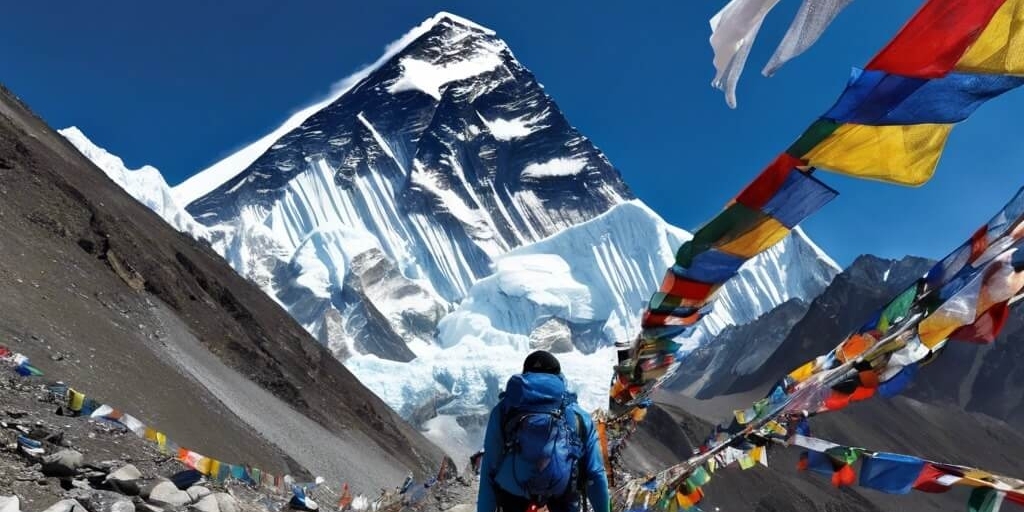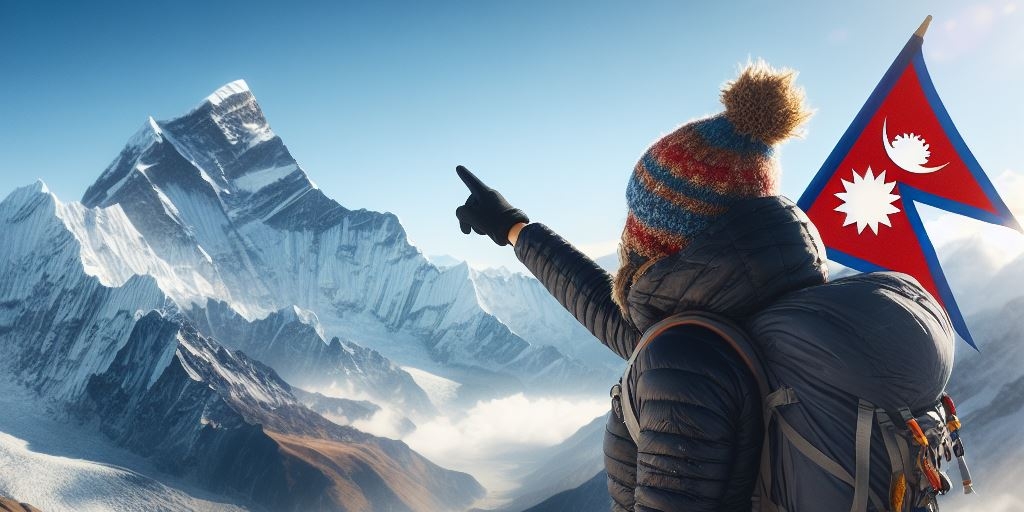Das ultimative Abenteuer: Die Everest Base Camp Trekking Tour
Willkommen bei dem ultimativen Abenteuer: der Everest Base Camp Trekking Tour. Tauchen Sie ein in die atemberaubende Schönheit des Himalaya und erle...

Are you an adventurous soul
yearning to explore the breathtaking trails of Nepal? If so, you may wonder if
you can still embark on a trek without a guide in 2024. Navigating the new
rules and regulations can feel like traversing unknown terrain, but fear not!
In this article, we will delve into the current guidelines and shed light on
whether solo trekking is still possible.
Overview of trekking in Nepal
Nepal, known as the land of
the Himalayas, has long been a haven for trekkers seeking awe-inspiring
landscapes and cultural immersion. With its diverse terrain, ranging from
snow-capped mountains to lush valleys, Nepal offers a plethora of trekking
opportunities for adventurers of all levels.
Trekking in Nepal is not
only a physically demanding activity but also a chance to experience the rich
cultural heritage of the region. From encountering friendly locals in remote
villages to witnessing ancient monasteries perched on mountainsides, each step
on the trail brings you closer to the heart of Nepal.
Importance of hiring a guide in Nepal
While the allure of solo
trekking may be strong, it's important to recognize the value that a guide
brings to the experience. Hiring a licensed guide in Nepal offers numerous
benefits, especially for those unfamiliar with the local customs, language, and
terrain.
A knowledgeable guide can
provide invaluable insights into the history and culture of the region. They
are well-versed in the intricacies of the trekking routes, ensuring that you
stay on the right path and avoid potential dangers. Additionally, a guide can
assist in logistical matters such as arranging accommodation, permits, and
transportation, allowing you to focus on enjoying the journey.
New rules and regulations for trekking in Nepal
In recent years, Nepal has
implemented stricter rules and regulations to enhance the safety and well-being
of trekkers. These measures aim to minimize the risks associated with trekking
in remote areas and ensure that trekkers have a positive and responsible
experience.
One of the notable changes
is the requirement of obtaining a TIMS (Trekkers' Information Management
System) card and a trekking permit. These documents serve as a way to track
trekkers' movements and provide essential information in case of emergencies.
The fees associated with these permits contribute to the conservation of the
trekking trails and support local communities.
Benefits of trekking with a guide
Trekking with a guide
offers a range of benefits that can greatly enhance your experience in Nepal.
Firstly, a guide provides a sense of security and reassurance, particularly in
challenging terrain or adverse weather conditions. They are trained in first aid
and can provide immediate assistance in case of emergencies.
Moreover, a guide's local
knowledge opens doors to hidden gems and lesser-known trails that may not be
marked on maps or guidebooks. They can introduce you to local communities and
facilitate meaningful cultural exchanges, adding a layer of authenticity to
your trekking adventure.
Additionally, a guide can
act as a bridge between you and the locals, helping to overcome language
barriers and fostering connections that may otherwise be challenging to
establish. Their expertise in navigating the trails ensures that you make the
most of your time, avoiding unnecessary detours and optimizing your trekking
experience.
Challenges of trekking without a guide
While some trekkers may
prefer the freedom and independence of trekking without a guide, it's crucial
to consider the challenges that come with this choice. Without a guide, you
assume full responsibility for navigation, safety, and logistical arrangements,
which can be overwhelming, especially for first-time trekkers or those with
limited experience in the region.
Navigating unfamiliar
terrain can be daunting, and without the guidance of an experienced local, you
may find it challenging to stay on the correct trail. Additionally, language
barriers may hinder effective communication with locals, making it difficult to
seek assistance or obtain vital information.
Furthermore, trekking
without a guide means you are solely responsible for managing emergencies and
potential risks. While accidents are rare, being prepared for unforeseen
circumstances is crucial. Without a guide's expertise in first aid and
emergency protocols, you may be at a disadvantage in critical situations.
Safety precautions for independent trekkers
If you choose to trek
independently in Nepal, taking certain safety precautions is essential to
ensure your well-being. Firstly, it's crucial to thoroughly research the trail
you plan to undertake, including its difficulty level, weather conditions, and
potential risks. Being aware of the challenges and preparing accordingly can
mitigate potential dangers.
Carrying essential trekking
gear, including a well-fitted backpack, sturdy hiking boots, and waterproof
clothing, is vital for your comfort and safety. Additionally, having a
comprehensive first aid kit, along with knowledge of basic first aid
procedures, can prove invaluable in case of minor injuries or emergencies.
Maintaining good physical
fitness before embarking on your trek is essential. Regular exercise and
training, focusing on cardiovascular endurance and strength, can prepare your
body for the demands of trekking in high-altitude environments.
Trekking routes suitable for independent trekkers
While hiring a guide is
highly recommended for trekkers in Nepal, there are still some routes that are
suitable for independent trekkers. These routes are well-marked, frequented by
other trekkers, and have readily available teahouse accommodations along the
way.
The Langtang Valley Trek,
located north of Kathmandu, offers a picturesque journey through rhododendron
forests, quaint villages, and panoramic mountain views. The trail is
well-established and provides ample opportunities for solo trekkers to connect
with nature and experience the local culture.
Another popular choice for
independent trekkers is the Ghorepani Poon Hill Trek in the Annapurna region.
This relatively short trek offers stunning sunrise views over the Annapurna and
Dhaulagiri mountain ranges. The trail is well-maintained and dotted with
teahouses, making it accessible and suitable for solo trekkers.
Trekking resources and information for independent
trekkers
For independent trekkers,
having access to reliable resources and up-to-date information is crucial. The
Nepal Tourism Board and the Trekking Agencies' Association of Nepal (TAAN)
provide valuable information on trekking routes, permits, and safety guidelines.
Their websites offer detailed descriptions of various treks, including
difficulty levels, duration, and highlights.
Online forums and travel
blogs can also be excellent sources of firsthand information from trekkers who
have recently completed the routes you are interested in. These platforms offer
insights into trail conditions, accommodation options, and personal
experiences, allowing you to make informed decisions.
If you prefer a more
personalized approach, consulting with travel agencies or trekking companies
can provide you with tailored itineraries and expert advice. They can help you
plan your trek, arrange necessary permits, and provide guidance on the best
practices for independent trekking.
The future of trekking in Nepal
As Nepal continues to
evolve and adapt to the changing landscape of trekking tourism, the future of
solo trekking remains uncertain. While the government has implemented stricter
regulations to ensure safety and sustainability, there may be further changes
in the coming years.
It is essential for
trekkers to stay informed about any updates to the rules and regulations
governing trekking in Nepal. By staying up to date and adhering to the
guidelines, you can continue to explore the stunning trails of Nepal while
respecting the cultural heritage and natural beauty of the region.
Conclusion
In conclusion, while the
new rules and regulations in Nepal have made solo trekking more challenging, it
is still possible to embark on a trek without a guide in 2024. However, it is
essential to carefully consider the benefits and challenges of trekking
independently and make an informed decision based on your experience, fitness
level, and comfort with the risks involved.
Trekking with a guide
offers numerous advantages, from ensuring safety and providing local knowledge
to facilitating cultural exchanges. Nevertheless, for those who prefer the
freedom and self-reliance of trekking without a guide, there are still suitable
routes available.
Remember, whether you
choose to trek with a guide or independently, responsible trekking practices
and respect for the environment and local communities are paramount. By
treading lightly and embracing the spirit of adventure with a sense of
responsibility, you can continue to enjoy the wonders of Nepal's trekking
trails for years to come.

Willkommen bei dem ultimativen Abenteuer: der Everest Base Camp Trekking Tour. Tauchen Sie ein in die atemberaubende Schönheit des Himalaya und erle...

Embark on the ultimate adventure and conquer the majestic Mera Peak, nestled in the heart of the Himalayas in Nepal. Standing tall at an impressive...

Are you ready to embrace the thrill of a lifetime? Nepal's majestic Himalayas beckon all adventure enthusiasts, offering breathtaking landscapes and...
Sign up to stay updated with latest offers, recent events and more news.
